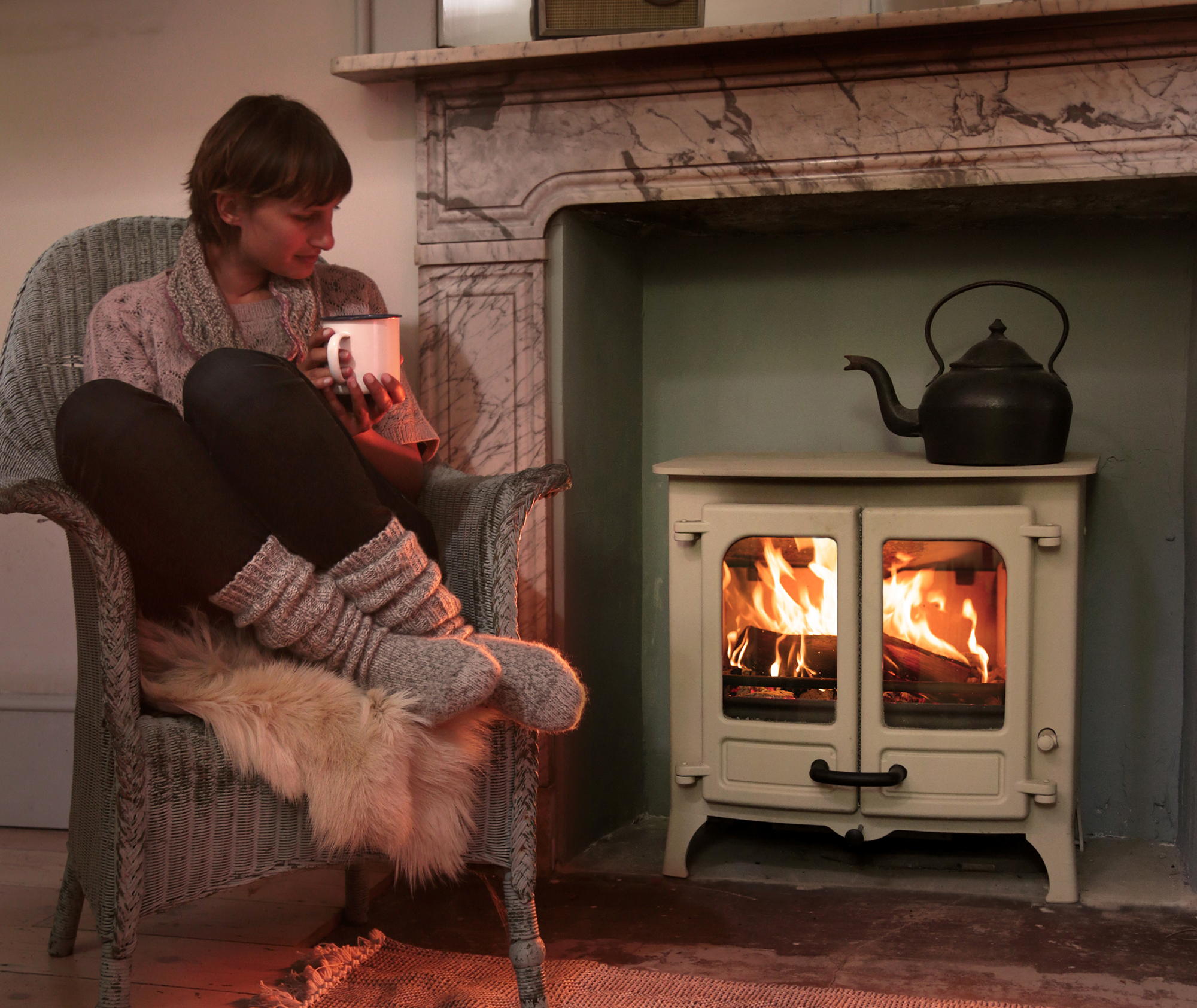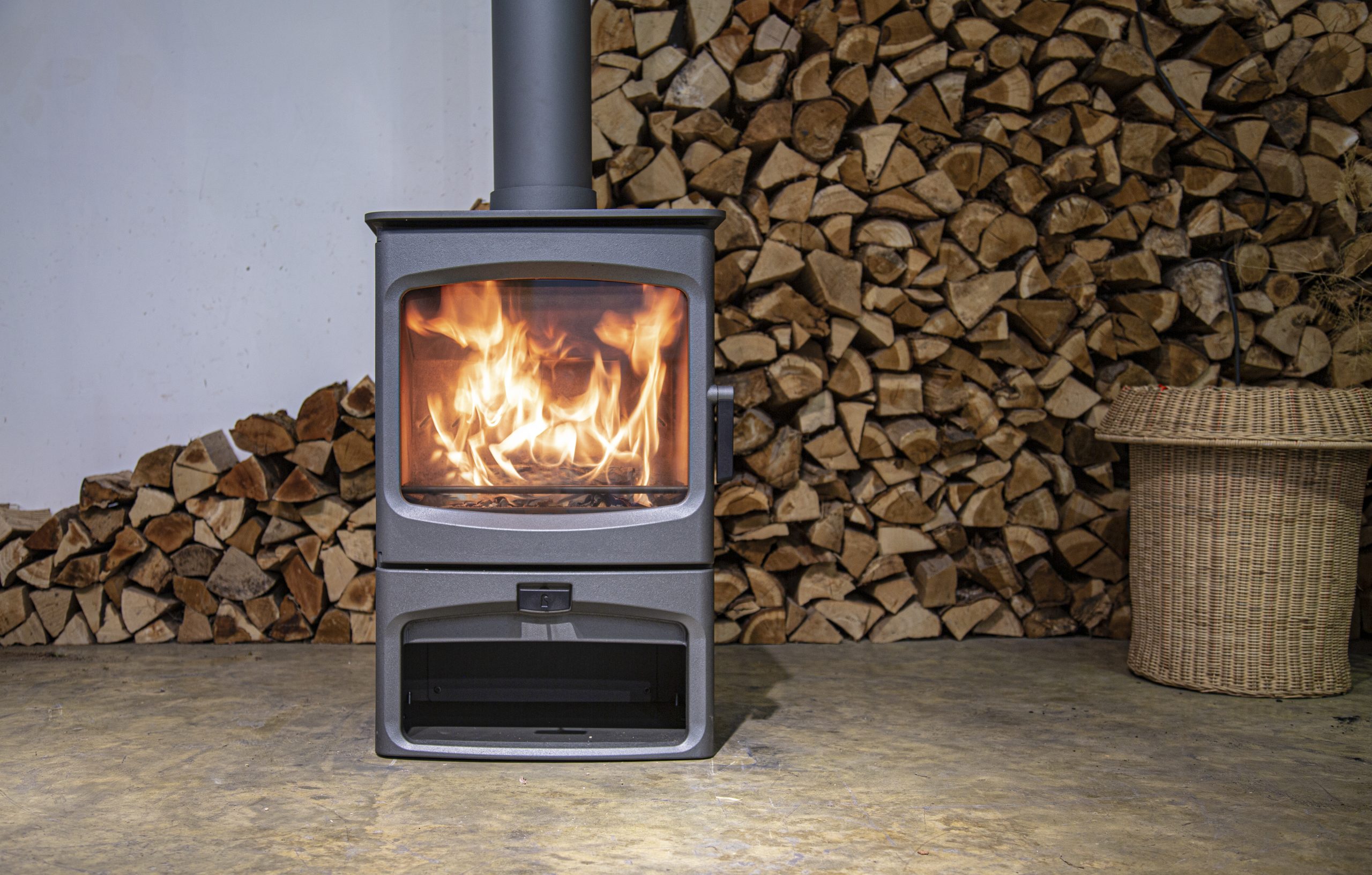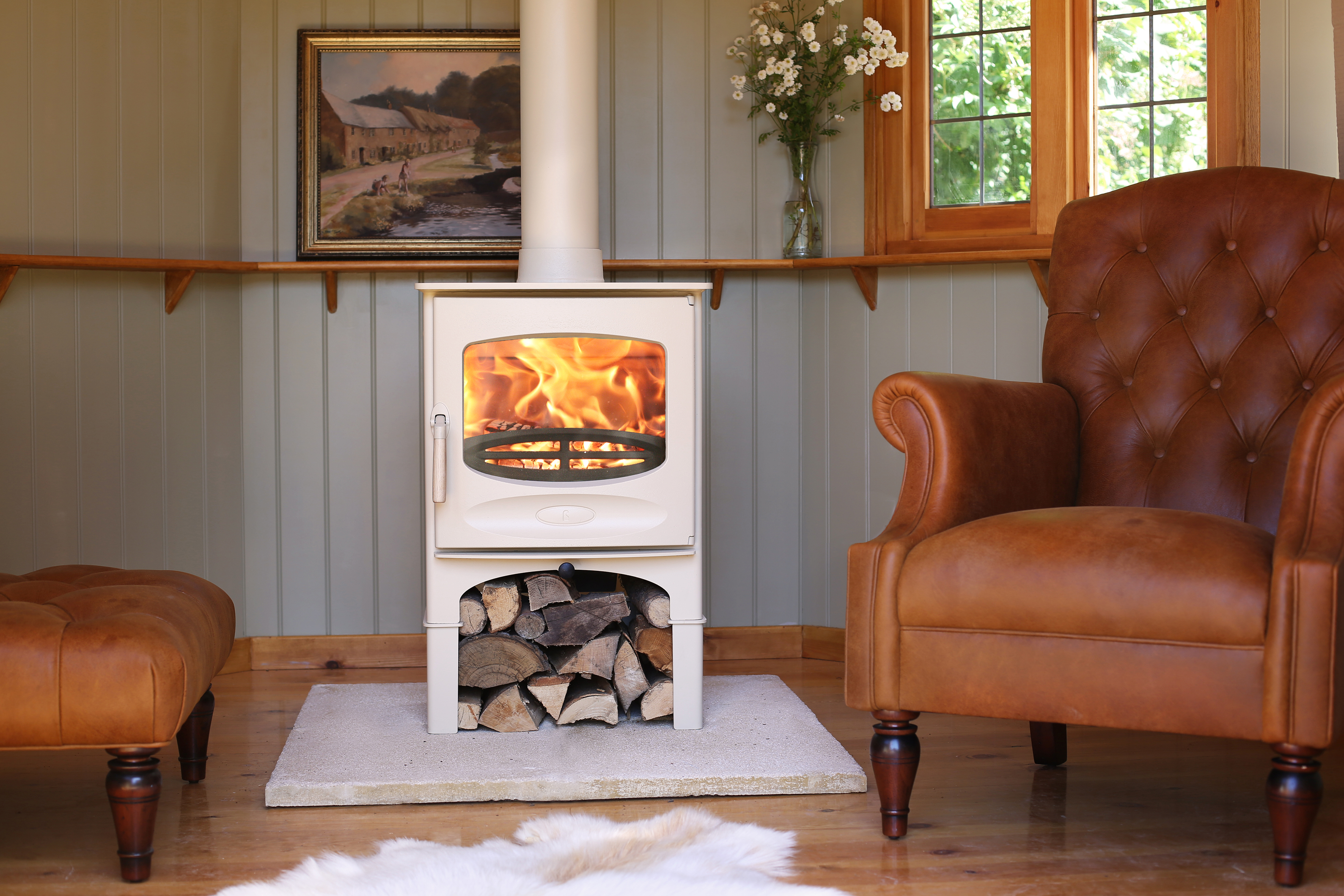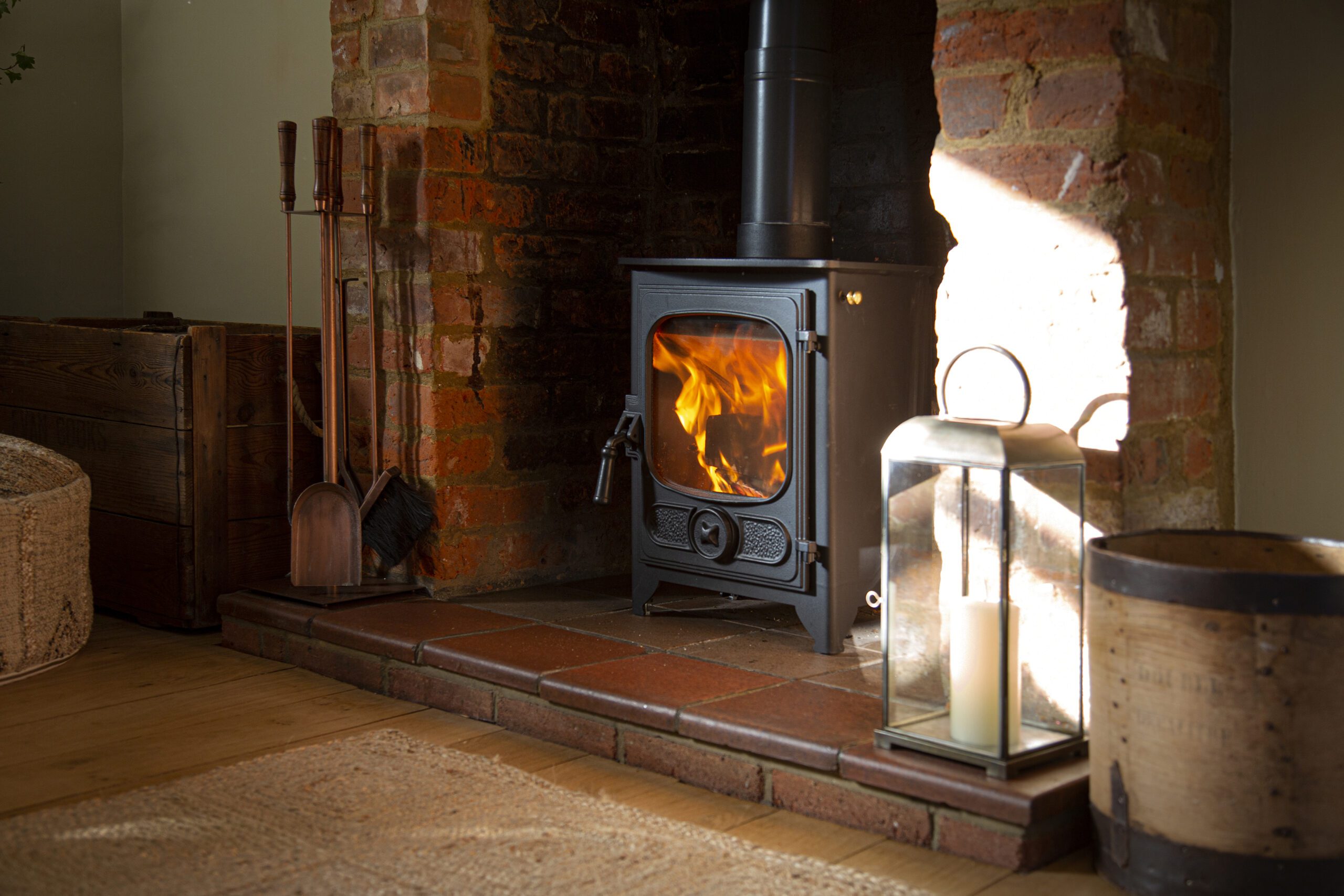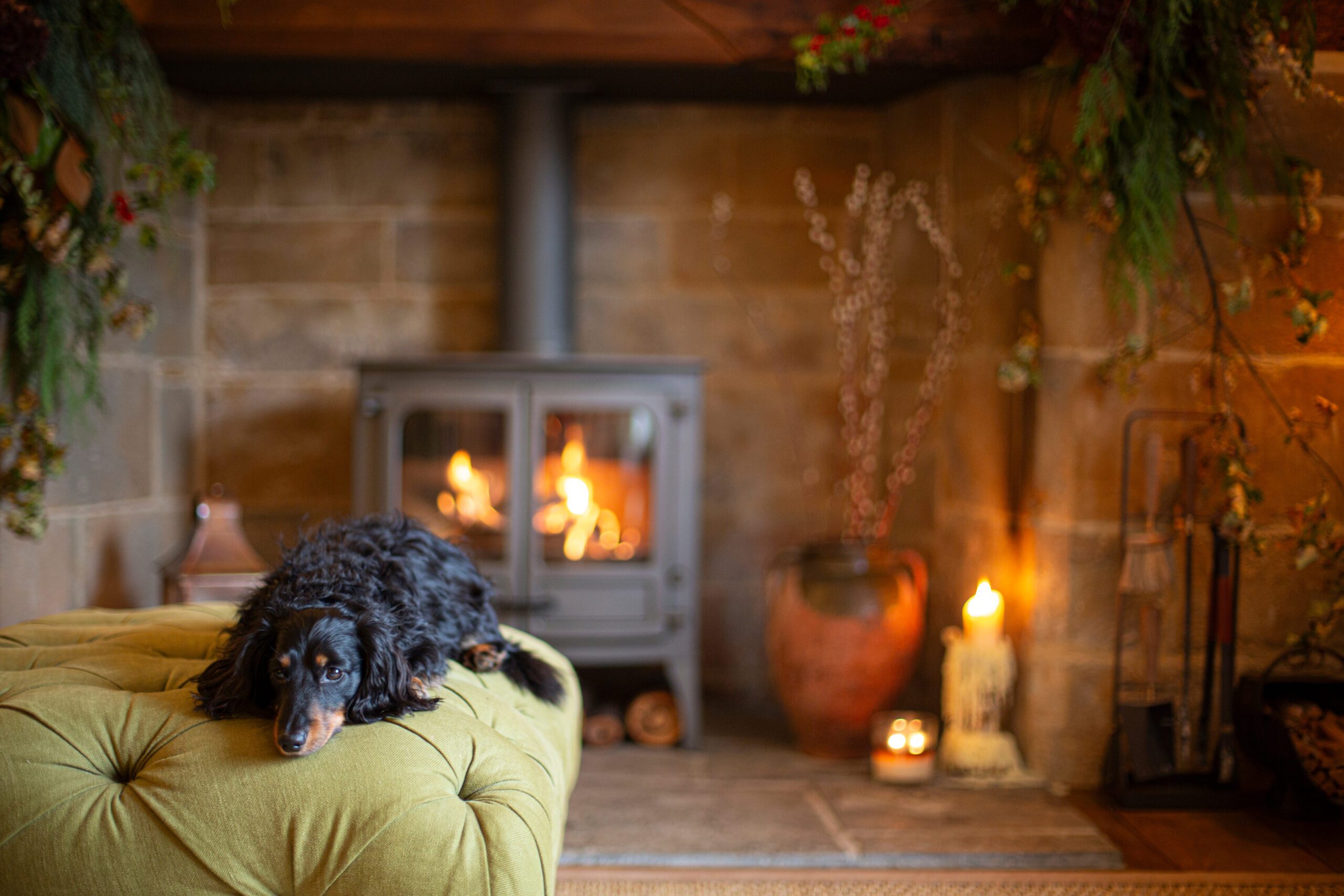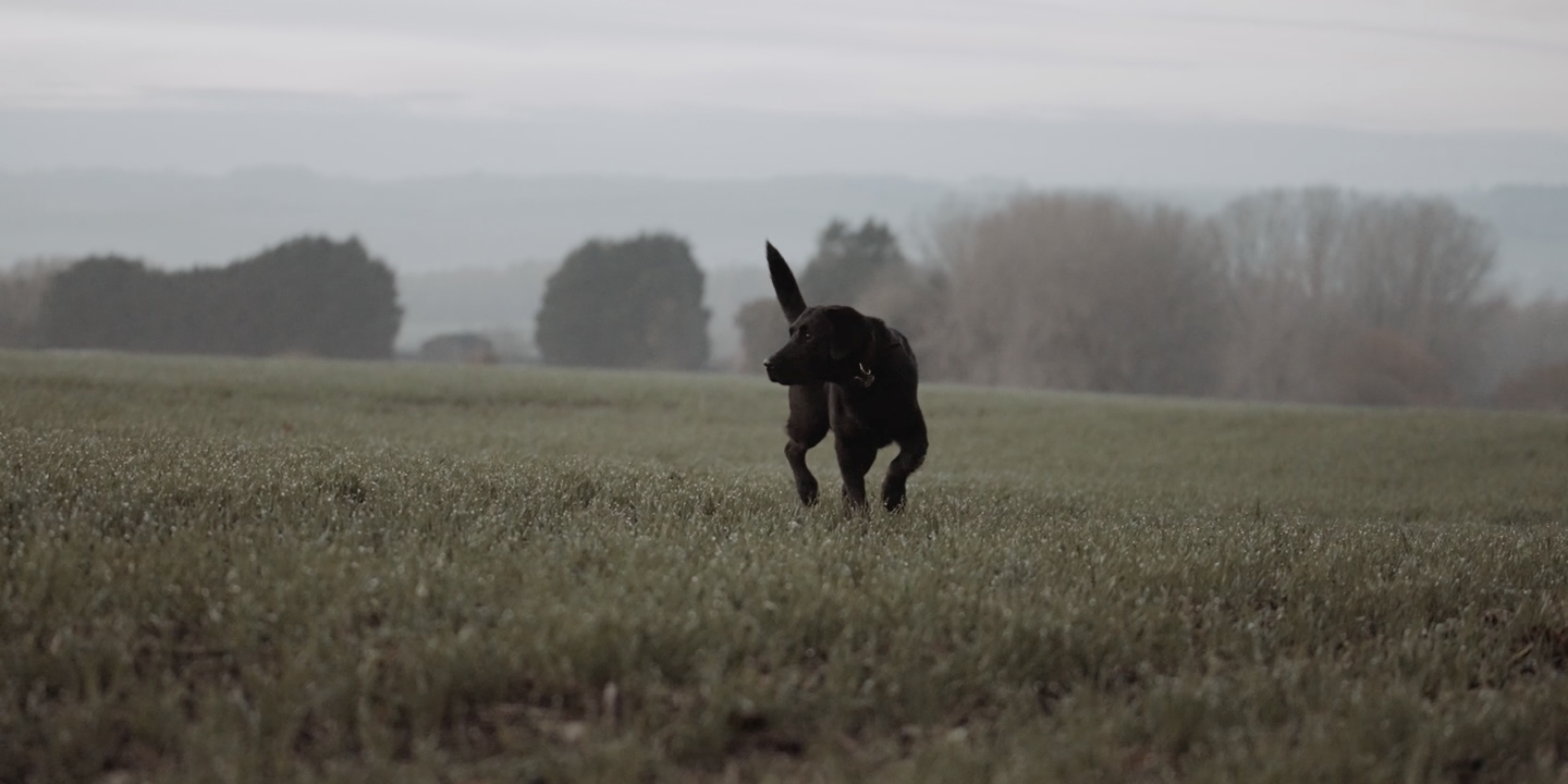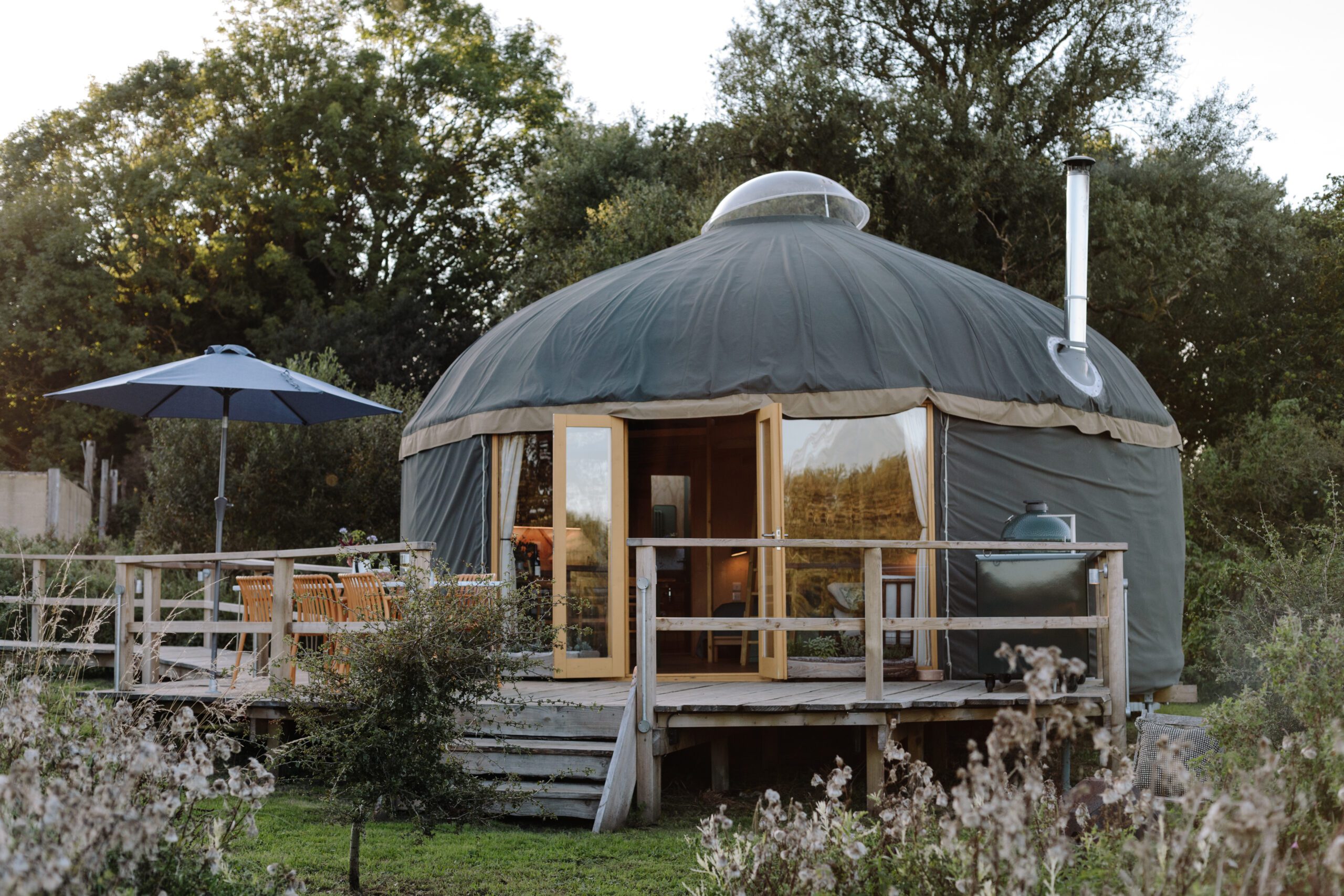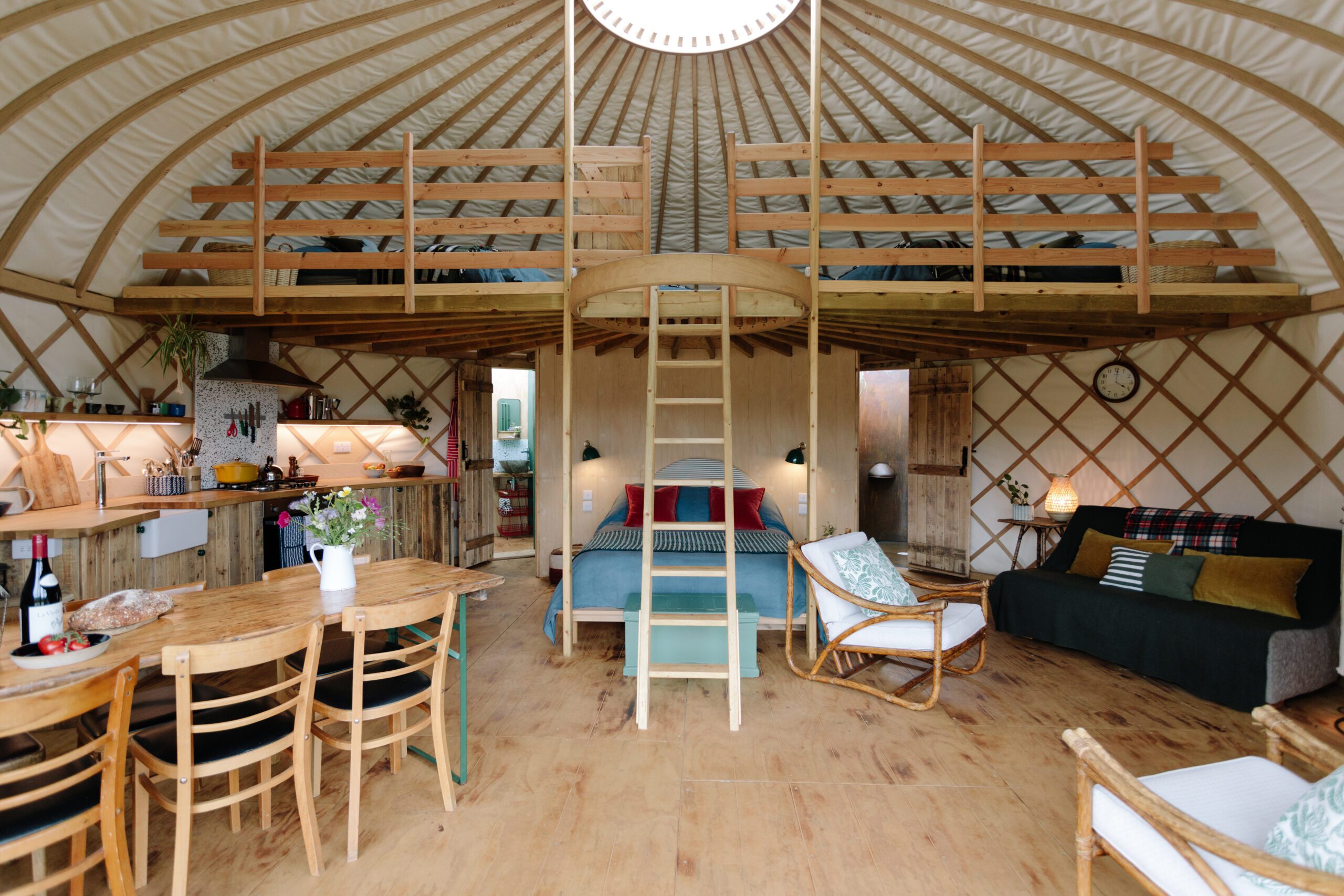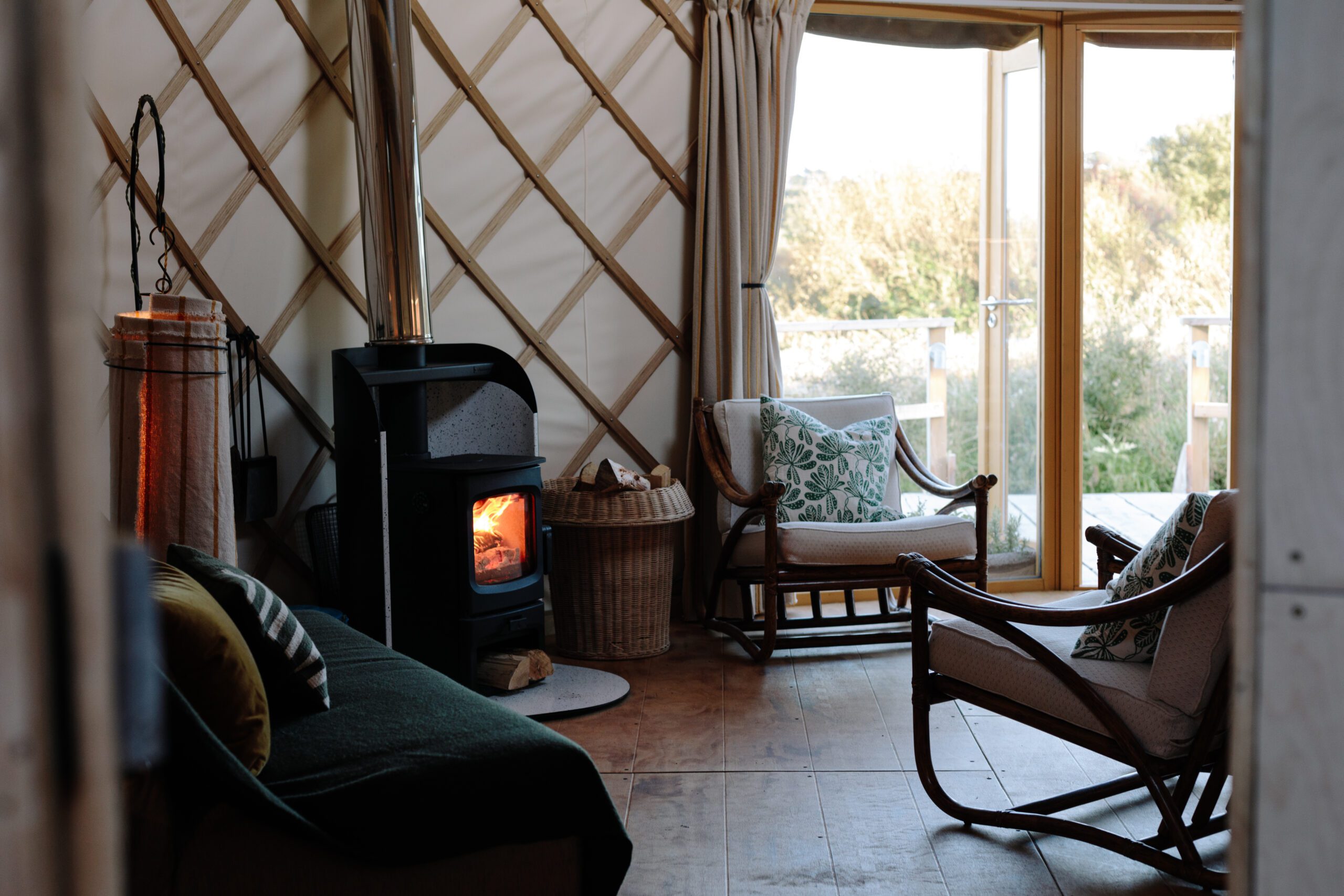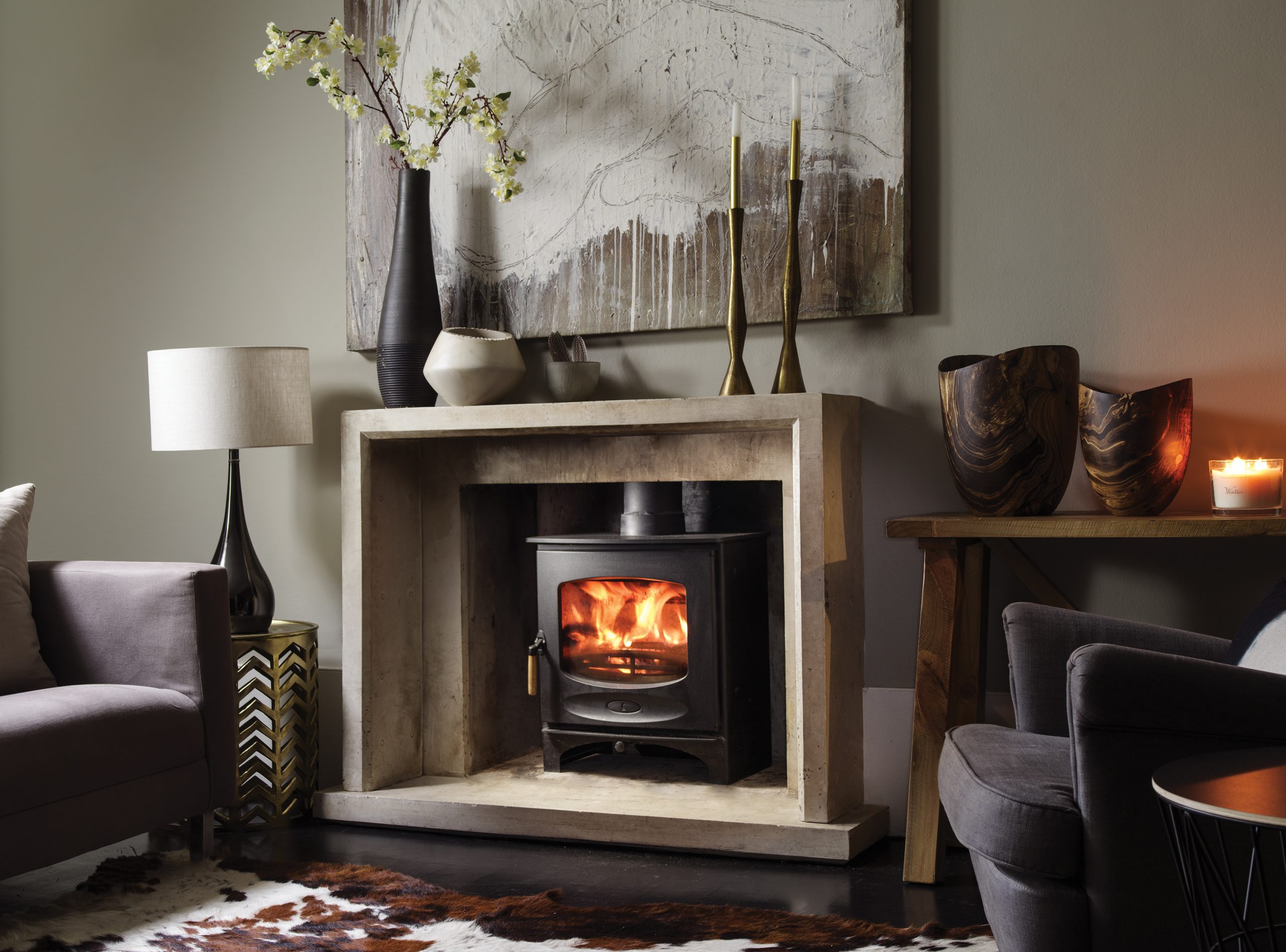Wood-burning stoves have long been at the heart of our homes, providing warmth, comfort, and a connection to nature. Yet, in recent years, campaigns such as Clean Air Night have been pushing their agenda against them. While we all share the goal of cleaner air, it is vital that discussions remain grounded in facts, not fearmongering or misleading half-truths. This blog aims to cut through the noise, championing the benefits of modern wood-burning stoves and their place in a sustainable future.
The evolution of wood-burning stoves 
The introduction of Ecodesign and Clearskies-certified stoves, such as Clearskies 5 models, represents a leap forward in clean-burning technology. These stoves significantly reduce particulate matter (PM2.5) emissions while maintaining efficiency and charm.
A London Wood-Burning Project’s report found that ClearSkies 5 stoves can even REDUCE PM2.5 in the home (1). Here are the key findings:
1/ Use of the clearSkies Level5 stove (which is Ecodesign compliant) demonstrated some benefits for indoor air quality. Indoor PM2.5 did not increase when adding fuel to the stove once lit… At times there was actually a decrease in indoor concentrations of PM2.5 when adding fuel.
This confirms what we have long been saying, a properly functioning modern wood stove draws particulates out of the room and up the flue, helping improve air quality and ventilation in the home. The stove used in this study was our Charnwood C-Five.
2/ Increases in pollutant concentrations may be more affected by participant technique or specific airflow characteristics of an individual appliance, rather than to the type of appliance or fuel.
We always encourage best stove practices to educate new and existing customers and beyond.
3/ However, the biggest increases in PM2.5 concentrations indoors did not relate to indoor wood or solid-fuel burning but instead were a result of cooking, especially frying, grilling and use of the oven, and particularly when the extraction fan was not used.
The reality is a slice of burnt toast or your Sunday lunch can contribute far more PM2.5 than a wood-burning stove in your home.
PM2.5 and air quality: The real story

While it is true that open fires and poorly maintained or outdated stoves contribute to air pollution, modern appliances tell a very different story. However, the terms ‘wood burning’ ‘wood burners or ‘lighting fires’ used in their posts are deliberately ambiguous and take no account of the type of appliance or quality of the wood fuel.
Clearskies-certified stoves reduce emissions by up to 90% compared to open fires and older stoves. In fact, if all homes transitioned to these advanced models, total PM2.5 emissions from indoor wood burning could drop to just 18% of current levels. (2)
To further highlight the importance of differentiating types of wood burning, independent data from the National Atmospheric Emissions Inventory (NAEI) shows us that burning dry wood on an Ecodesign-compliant stove accounted for less than 0.3% of total UK PM2.5 emissions in 2023. (3)
Additionally, a report published by the Institute for Fiscal Studies (IFS) in December 2024 found that average PM2.5 levels in England fell by 54% between 2003 and 2023, reaching a 20-year low. Despite sensationalist headlines in the press, the IFS explicitly noted there is a tendency to “overestimate the importance of wood burning” when apportioning PM2.5 emissions to specific sources. The report clarified:
“…emissions may be dispersed by the wind or brought to the ground by rain, meaning a large emission of PM2.5 may not translate into significantly higher amounts of PM2.5 in the air we breathe … Considering only primary PM2.5 tends to overestimate the importance of wood burning as opposed to transport and energy combustion.” (4)
These findings reinforce the case for modern wood-burning stoves, which emit an exceptionally small fraction of PM2.5 compared to outdated practices and other sources such as transport and industrial combustion. By focusing broadly on ‘domestic wood burning’ and not educating the public about the differences, campaigns like Clean Air Night risk missing the real opportunities to tackle air pollution.
The case for sustainable firewood: Cleaner and greener

Wood burning, when done responsibly, remains one of the most sustainable and resilient heating methods available. Locally sourced firewood boasts a low carbon footprint compared to imported fossil fuels like liquid petroleum gas (LPG). Unlike finite fossil resources, wood is renewable, especially when harvested through well-managed practices such as coppicing. Coppicing not only ensures a sustainable supply of firewood but also promotes biodiversity and supports healthy forests. The income generated by wood-burning stove users actively contributes to these sustainable practices, further enhancing their positive environmental impact.
Critics often fail to appreciate these benefits, instead promoting alternatives that create dependency on imported fuels. For instance, campaigns advocating for LPG stoves in developing countries frequently disregard the advantages of proper wood-burning technology. Providing households with efficient wood stoves and chimneys would preserve cultural traditions, reduce emissions, and strengthen local economies. While alternatively, reliance on imported fuels undermines sustainability and energy security.
Every heating solution comes with its own set of challenges. Electric, for example, relies heavily on batteries that depend on rare earth elements like cobalt, often sourced from environmentally and ethically problematic mining operations. Similarly, the production of solar panels and wind turbines involves significant energy consumption and resource extraction. While these technologies are essential in the transition to cleaner energy, they are not without their limitations and trade-offs. In contrast, modern wood-burning stoves offer a local, renewable, and low-impact solution that doesn’t rely on complex global supply chains.
Modern wood-burning stoves also play a critical role in our energy mix as a co-heating solution. Unlike solar panels or wind turbines, which are dependent on favourable weather conditions, wood stoves offer reliable heating during power cuts or periods of low renewable energy generation. They act as a dependable backup system, providing warmth when solar and wind resources are unavailable. This enhances our nation’s energy security and complements other renewable energy systems, reducing overall reliance on fossil fuels and imported energy.
By embracing sustainable practices and integrating wood-burning stoves with renewable technologies, we can create a balanced approach to heating that supports both environmental goals and energy independence.
Modern stoves offer a wide range of benefits which you can learn more about here: The real reason people install a wood-burning stove
Misinformation and misleading campaigns

Clean Air Night, while in part well-intentioned, relies on misleading statistics and alarmist messaging. Much of its content originates from groups like Global Action Plan (GAP), whose funding sources and motivations remain unclear.
What’s particularly telling is how the campaigns are coordinated. It feeds members prepackaged propaganda soundbites and graphics encouraging almost mindless sharing across social media. By asking people to simply copy, paste, and flood social media with unsubstantiated claims, these campaigns stifle meaningful debate. Furthermore, rather than linking to raw data or credible studies that adequately support these claims against modern wood-burning stoves they frequently direct people back to their own website in a closed loop of biased information.
Interestingly, StoveReadyWood.uk has highlighted the ties between GAP’s leadership and industries that directly compete with the wood stove market, such as solar and LPG providers. Additionally, this research raises an important question: what would happen to fuel prices if burning wood on wood-burning stoves was not available? Supply and demand dictates that prices for gas users would very likely go up as more people were forced to use it. Also, wood-burning stoves are unique in allowing people to source their own fuel for free in emergencies, offering independence from sudden price hikes and supply chain disruptions. Eliminating this option would leave households entirely dependent on external energy markets, a vulnerability that should not be overlooked.
Building a balanced future
The path to cleaner air isn’t about blanketly targeting wood-burning but about encouraging responsible practices and encouraging transitions to modern, eco-friendly appliances. Clearskies-certified stoves showcase how innovation can significantly reduce emissions while preserving the traditions and warmth that wood burning brings to our homes. Transitioning from open fires and outdated stoves to modern wood-burning stoves is the key to achieving cleaner air without losing the huge number of unique benefits wood-burning offers.
Responsible wood burning starts with proper maintenance and the use of seasoned, sustainable firewood. By adopting these practices, households can minimise emissions and maximise efficiency, ensuring wood stoves are an environmentally friendly and safe choice.
At its heart, the debate around wood-burning stoves is about more than heating/PM2.5; it’s about sustainability, energy independence, and keeping a connection to our heritage. Modern wood-burning stoves are not the problem – they are part of the solution. By cutting through misinformation and embracing the innovations within the industry, we can safeguard our air, while ensuring that this vital tradition continues to benefit us all.
To learn more about responsible wood burning and the benefits of transitioning to modern stoves, visit the Stove Industry Alliance.
Further reading that explains in more detail why we strongly feel a collaborative approach is required:
https://www.charnwood.com/news/wood-burning-stoves-co-heating-future-a-nuanced-look-at-pm-25-emissions/
https://www.charnwood.com/news/wellbeing-benefits-log-burners/
https://www.charnwood.com/news/harnessing-the-power-of-wood-fuel-a-sustainable-approach-to-home-heating/
https://www.charnwood.com/news/essential-wood-burning-stove-tips/
References:
1/ https://www.imperial.ac.uk/media/imperial-college/medicine/sph/environmental-research-group/London-Wood-Burning-Project-Report_final.pdf
2/ https://stovereadywood.uk/falling-pm25
3/ https://naei.energysecurity.gov.uk/data/data-selector/results?classification=4&start_year=1990&end_year=2022§or=all&category%5B1A4bi%5D=1A4bi&include_ad=1
4/ https://stoveindustryassociation.org/pm2-5-levels-halved-since-2003/






